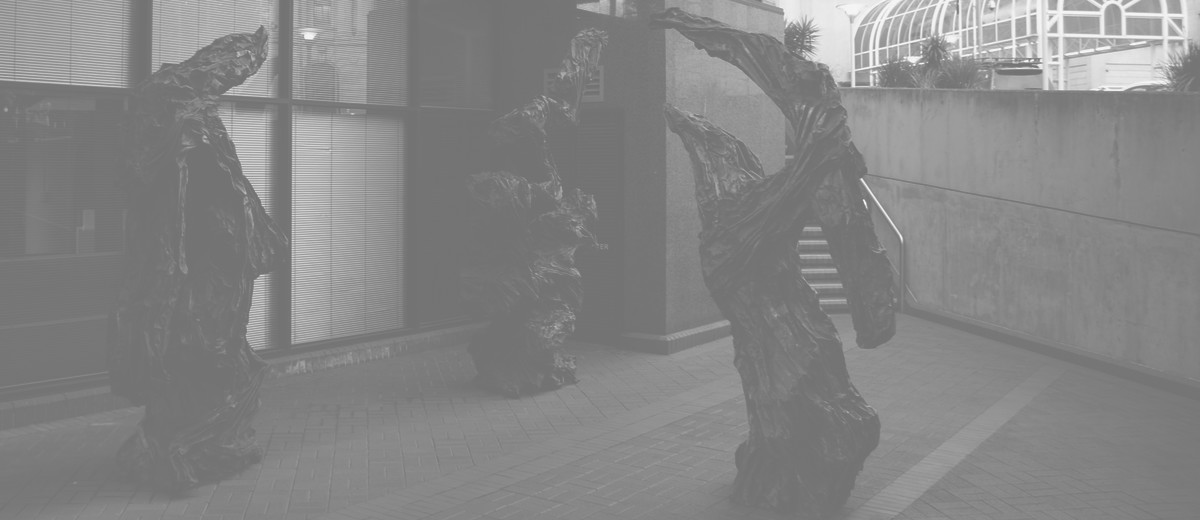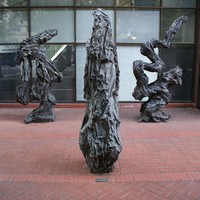Thing
Contribute‘Construction’, ‘Thought’ and ‘Optimism’ make up the three elements of this sculpture by Victor Meertens. Like many other works in this tour, Rhythms of Construction 1-3 is a testament to Adelaide’s history of bronze statues and monuments.
Meerten’s work is a bronze reproduction of a model originally made with galvanised steel. Although the weight and inflexibility of the bronze material remain true to the steel-like materiality, each element also appears to have human-like and natural qualities. Rhythms of Construction conveys a sense of bodies that, though upright, appear to be subject to great strain.
Born in Victoria in 1955, Meertens completed his education at the Royal Melbourne Institute of Technology in 1979. Corrugated iron became the signature material in the construction of his anthropomorphic forms. Between 1986 and 1990, Meertens had four solo shows. He was invited to exhibit in the Third Australian Sculpture Triennial and the Australian Biennale 1988.
The bronze used in this work was supplied by the Art Foundry in Elphinstone, Victoria. Meerten’s sculpture was commissioned by the Adelaide Stations and Environs Redevelopment (ASER) Property Trust in 1992.
Media
Add mediaImages








CommentAdd new comment
Quickly, it's still quiet here; be the first to have your say!